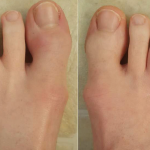(Reuters Health)—Up to 15% of people with psoriasis have undiagnosed arthritis that’s related to the skin condition, according to a new review.
“The important takeaway,” said Dr. Abby Van Voorhees, director of the Psoriasis and Phototherapy Treatment Center at the Hospital of the University of Pennsylvania in Philadelphia, “would be that further education is needed for patients with psoriasis about the potential that they may develop psoriatic arthritis.”
Van Voorhees was not part of the new review.
Only about one in four people with psoriasis will develop related arthritis, but everyone with psoriasis should be aware of the potential, she told Reuters Health by phone.
“We don’t understand how the connection works at this point,” she said.
Researchers from French institutions including Universite Claude Bernard Lyon and Universite de Bordeaux, along with others, reviewed 12 previous studies of people with psoriasis. The rate of undiagnosed psoriatic arthritis in the studies varied from 4% to almost 34% of patients.
The studies used very different diagnostic criteria for identifying arthritis, which may explain why the rates were so different between papers, the authors note June 5 in the Journal of the American Academy of Dermatology.
Reviewing all of the studies together, they predict that about 15% of the psoriasis patients a dermatologist sees at a dermatologic center may have undiagnosed psoriatic arthritis.
Many patients many have joint pain and other symptoms and “not know it is an important condition,” Van Voorhees said.
Psoriatic arthritis can be treated with non-steroidal antiinflammatory drugs like aspirin, immunosuppressive drugs like methotrexate, or biologic drugs given by injection or infusion. Catching arthritis earlier means treatment can start earlier and more joint damage can be prevented, Van Voorhees said.
Dermatologists and primary care doctors are often the first to see patients with joint symptoms, and some are less aware of the need to screen for psoriatic arthritis, she said. In other cases, patients don’t mention their pain because they attribute it to “just getting older,” she said.
“Psoriatic arthritis can (start) with swollen and tender joints and with lower back pain and stiffness,” said Dr. Abrar A. Qureshi, chair of the dermatology department at Brown University in Providence, Rhode Island. “As psoriasis patients are seeing a dermatologist, they do not bring up pain and stiffness as most patients do not make the link between the skin and musculoskeletal disease.”
Qureshi was not part of the new review.
“Dermatologists are beginning to catch on and ask more patients about pain and stiffness,” he told Reuters Health by email.
Van Voorhees routinely asks patients about their joint pain, what time of day it happens, in which joints, and takes a blood test to exclude rheumatoid arthritis.
“We want to be sure that the inflammation that does occur in patients is caught as early as possible,” she said. “What you don’t ask about, sometimes we don’t learn about.


